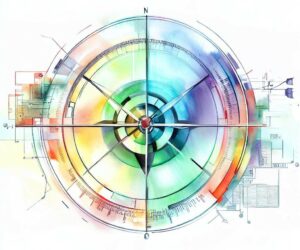An electric power network breaks down into the following components:- Energy production: nuclear power stations, hydraulic power stations, thermal power stations, wind farms, solar farms- Transport: the transport of electricity includes very high voltage, high voltage, medium voltage and low voltage (LV)- Distribution: the selling of electricity to users/consumers- Services provided to users/consumers (but also to producers): the last element of the “Smart Grid” which should provide a better follow-up of consumption trends in order to optimize them.A “smart” network is a communicating network (in both directions: producers towards consumers, including transport) which offers new services (optimizing production/consumption, self-regulations, supervision etc.). This “Smart Grid” allows to solve certain network management problems like consumption peaks, the request to suppress consumption in case of underproduction, the fact that renewable energies are intermittent. It also provides benefits like follow-up automation, the possibility to set up a pricing system based on real consumption, maintenance cost reduction (avoiding useless trips with the electric company vans).According to Jean-Marie Bernard (ErDF – the French power distribution network) and Olivier Jehgl (EDF – the leading French electricity producer), who spoke during the conference on the energy/telecom convergence organized by ASPROM on 06-07/04/2011, the production and transport to the Low Voltage transforming station are already “smart”. But, just like with the local telecom loop, it is the last kilometres which are not “smart”. In fact, in order to have a “smart” network, the 35 million French homes need to be equipped with a new intelligent meter, which is capable of quickly interacting and communicating information as well as receiving orders or pricing information. This intelligent meter is called LINKY. It contains an electric meter connected to a monitoring module that communicates in CPL (only with ErDF), a USB port on its front side, and can be equipped with an additional communication module (radio frequency, GPRS etc.). I said that it “can be equipped”, as for the time being the dedicated slot remains empty. Young start-ups, as well as major companies are ready to fill this gap and thus offer services which are mainly related to consumption monitoring and optimization. This should really set going the “smart home” market (home automation 2.0).In short, we are technologically ready.A test involving 300,000 LINKY meters is currently being carried out in Lyon and Tours. This new Machine to Machine (M2M) network has transmitted the first issues: a fault on the connection between the meter and the LV station has been communicated by the meter, which allowed to perform a targeted and quick action.ErDF is waiting for the “go-ahead signal” from the public authorities so that it may deploy the 34 million LINKY meters by the end of 2018, at a rate of 30-35,000 meters a day.Why the public authorities? Because the Smart Grid requires support from the public authorities and (EU) institutions. As the necessary investment is substantial, it can be made possible only if it is imposed through laws/regulations. The EU demands that the European power network become “Smart Grid” by 2018.Public authority is equivalent to political decision. The latter may take a great deal of time as the government must find the most suitable moment between the current events and the presidential elections, in order to take full advantage of the impact of this decision.This is what has triggered my question: Will our infrastructure be ready for 2018?










